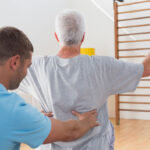Dizziness and Vertigo

Dizziness and Vertigo
Dizziness is one of the most common health problems for adults.Dizziness can be a range of sensations including feeling light-headed, faint, woozy, giddy, unsteady, off-balance or weak.Vertigo is a type of dizziness that feels as though you or your surroundings are spinning.
Dizziness is often caused by illnesses that affect the inner ear, such as benign paroxysmal positional vertigo (BPPV), migraine and inflammation of the inner ear balance apparatus (called vestibular neuritis).
While some people understandably find it difficult to describe their dizziness, a description of your dizziness and the circumstances in which it occurs may be very helpful in reaching a diagnosis.
Symptoms of dizziness
- a sensation of movement (including spinning), either of yourself or the external environment
- Unsteadiness, including finding it difficult to walk in a straight line
- Light-headedness
- Sexual satisfaction
- Ringing or other sounds in the ears
- Staggering gait and loss of coordination
- Unusual eye movements, such as flitting of the eyes
- Finding it difficult to see clearly when moving, for example, when reading a sign while walking or driving

What physiotherapy will be used to treat vertigo?
The physiotherapy chosen to treat your condition will depend on the exact symptoms and severity of vertigo.
- The Epley Manoeuvre: this is a technique aimed at moving the otoconia pieces (crystals) which are disrupting the vestibular system, to areas which will not cause any symptoms. Four specific movements are carried out to try and move the crystals.
- Vestibular rehabilitation - which includes special exercises designed to get your vestibular system functioning normally again
- Neck mobilisations
- Pacing
























